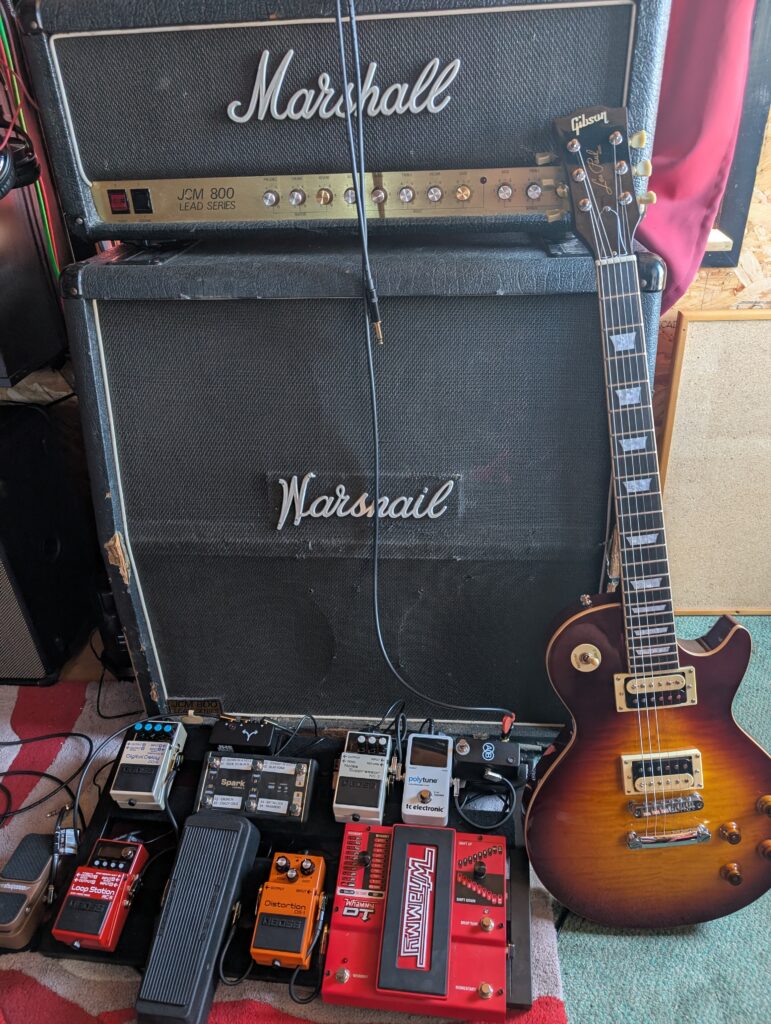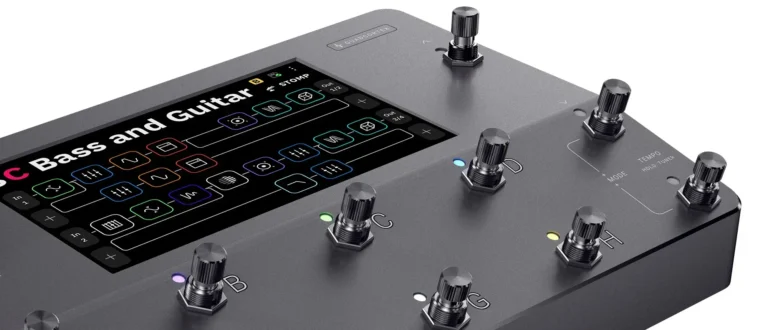Chasing tone
Once upon a time, a great tone was a privilege. Reserved for those who could afford boutique amps, racks of pedals, and studio time, it was as much about access as it was about talent. But over the past 40 years, a quiet revolution has unfolded. Today, a teenager in a bedroom can wield tones that rival the pros. This is the story of that revolution – and how it gave birth to something powerful: sonic individuality.
The Old Regime: Tone as a Privilege:
In the analog era, tone was visible. A photo of a pedalboard or amp stack could reveal everything. Rich players had racks of gear, multiple amps, and stage techs to switch them mid-song. Everyone else tap-danced their way through a set, hoping they hit the right delay in time for the solo. But today, a photo no longer tells the story — the chain is invisible, the sound is encoded, and the real magic is hidden in the hands of the creator.

The Evolution of Tone: From Tap-Dance to Touchscreen
The Analog Era (1950s–1980s)
Back then, a guitarist’s world was limited: one amp, a few pedals, and a lot of footwork. There were no presets. No scenes. Changing tone mid-song meant literal tap-dancing on a pedalboard.
The Rack + MIDI Era (1980s–1990s)
Enter rackmount gear and MIDI switchers. Suddenly, massive rigs were possible — if you had the budget of Pink Floyd. Techs backstage handled the changes. Tone was still analog, but switching was finally programmable.
The First Wave of Modellers (2000s–2010s)
Line 6 PODs, Kemper, Axe-Fx, and Helix brought amp and effect modelling into a single box. Players could now profile, emulate, and store tones. But these tools were still glitchy, often complicated, and sonically inconsistent.
The Invisible Pedalboard
Tone as IP
In the analog world, your tone was visible. Anyone could snap a photo of your rig and recreate it. Now, tone lives in invisible files — presets, captures, impulse responses. Unless shared, they remain secret. A young artist can finally protect their sound the same way a writer protects their lyrics. Tim Henson’s chain isn’t something you can reverse-engineer from a tour photo.
emulation vs creation
This isn’t just access to famous tones — it's liberation from them. Players today aren’t just recreating Hendrix or EVH. They’re creating sonic spaces that have never existed: Blending amps from different eras; Layering reverbs and pitch FX in ways analog couldn’t dream of; Sculpting tone not just by EQ, but by routing, cab sim IRs, and time-based modulation
Mia’s Journey: From Spark to Stage
Tone used to be something you inherited — passed down through legends, locked behind price tags. Today, it’s something you craft. Whether you're in a bedroom or on a festival stage, the tools are the same. This isn’t just a shift in gear — it’s a shift in power. And for young musicians like Mia, it means their sound can be just as iconic, just as distinct, and entirely their own.
A Global Stage, Levelled
A guitarist in Belfast. A beatmaker in Nairobi. A bedroom shredder in Seoul. All now play on the same tonal stage, limited by their own imagination. The gear has become a conduit, not a gatekeeper. And with sharing platforms, tone is spreading faster than vinyl ever did — but only when artists choose to share it.
Tone is no longer a destination
It's a dynamic state. For young artists like Mia, the journey is no longer about acquiring the right gear, but expressing the right self. With every update, modeller, and capture, the voice becomes clearer — and more personal. Welcome to the age of tone as identity.
Creativity Over Conformity
With limitless options and fewer gatekeepers, players aren’t chasing “that sound.” They’re chasing their sound. What used to be mimicry is now identity. What used to be standard is now signature. Modellers have allowed players the opportunity to play pedals and amp combinations that your every day guitarist would never come into contact with, let alone be afforded the opportunity to actually add them to their own rig.

